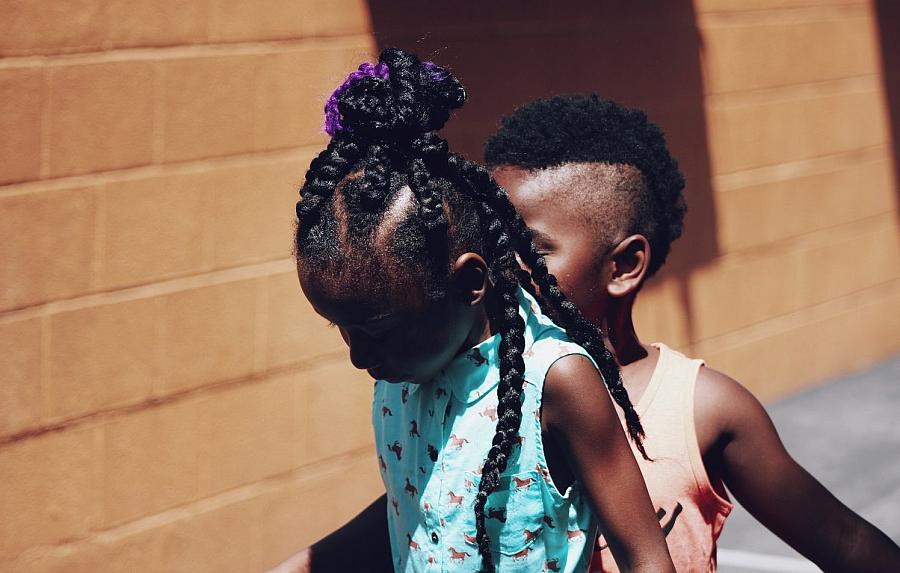Can LA County’s problem-plagued child welfare system do better for LA’s Black children?

(Photo by Samantha Sophia/Unsplash.com)
In Los Angeles County, home of the largest regional child welfare system in the nation, social workers break up Black, Native American, and low-income families at far higher rates than white and wealthier families.
LA’s child welfare statistics offer a bleak picture of the current situation.
Research suggests that 58% of Black children in LA County will endure an investigation by LA’s Department of Children and Family Services (DCFS) before the age of 18. The same is true for about half of the county’s Native American kids.
Black children make up approximately 7.5% of kids in LA County, but comprise nearly 25% of kids (8,156 kids) in LA’s foster care system. By comparison, white children account for 20.4% of LA’s youth and just 11% of kids in the child welfare system.
Overall, LA County has the third highest rate of removal among the nation’s largest jurisdictions, at 3.89 kids removed per 1,000 in fiscal year 2021. By contrast, the next largest cities/counties, New York, Chicago, and Houston had rates of 1.55, 1.23, and .77 removals per 1,000 kids, respectively.
Family separation, even for short periods of time, is an incredibly traumatic experience for children. Kids are not only taken away from their parents, but are often separated from their siblings and abruptly removed from their schools and communities. Further, research shows that spending time in the foster care system disproportionately leads to long-term negative health impacts, involvement with the justice system, and homelessness.
One study found that former foster youth in Washington and Oregon experienced PTSD at twice the rate of war veterans and only one-fifth of respondents said they were doing well with regard to educational achievement, income, and other important life outcomes. Approximately one-third of study participants said they had been abused while in foster care.
Other studies have found that kids whose families are the subjects of abuse or neglect investigations generally fare better in life if they remain with their parents than kids in comparable circumstances who are sent into foster care.
DCFS is not only removing children facing serious danger and neglect at home. Families are often separated in response to circumstances where family support is needed, not removal.
It’s not uncommon for DCFS to remove children from their home when a mother experiencing domestic violence calls the police for help. In these situations, responding law enforcement officers make a judgment call on whether to involve DCFS in the case.
Earlier this year, Latino USA reported on the death of a baby named Joseph in the care of a foster mother in Palmdale. Unbeknownst to the mother, two months earlier, another child had died under questionable circumstances in the same foster home. Joseph’s mother had her kids placed in foster care after calling the police for help with her physically abusive partner.
This series, supported by a grant from the 2022 California Impact Fund, will look at how poverty, including homelessness, is too often interpreted as neglect, causing low-income parents to be punished for actions that typically would not lead to child welfare involvement, for an affluent white family.
Interestingly, more than 35% of child welfare referrals were for allegations of “general neglect,” while 1.2% were for suspected “severe neglect.” I intend to look more closely at the allegations of neglect that result in child removals in LA County.
Through this series, I will dig into the troubling history of child welfare in Los Angeles, and share the stories of individual families entangled in the foster care system — stories told by people in their own voices as much as possible.
At the same time, I will look at possible solutions — including areas for reform listed in a roadmap for change offered by the new local Reimagine Child Safety Coalition, as well as strategies that other counties have employed to reduce disparities.
This reporting project comes at a pivotal time for LA’s child welfare system. Last November, DCFS’s director, Bobby Cagle, made the unexpected announcement that he would retire at the end of 2021. While it’s common for DCFS leaders to leave the position after a few years, just before Cagle’s announcement in November, news broke that a Norwalk foster mother had been criminally charged for allegedly torturing and beating her 4-year-old foster son into a coma.
The good news is that there is change on the horizon in the form of an alliance of 35 organizations, which have recently co-created the Reimagine Child Safety Coalition.
In November, the coalition issued a letter and list of 11 demands for overhauling child welfare in LA County. Among those demands was a call for a moratorium on removing kids after a parent has experienced domestic violence.
Additionally, the group wants DCFS to stop drug testing pregnant people and infants in hospitals, and asks for avenues to be opened so that those with past felony convictions might become relative caregivers for kids who would otherwise be placed with foster families.
The LA County Board of Supervisors must also create an independent civilian oversight commission on child welfare, according to the coalition.
In the course of the series, I will delve into the work of Reimagine Child Safety Coalition and the community groups pushing for change, and point toward ways in which the county might rework its broken system.
